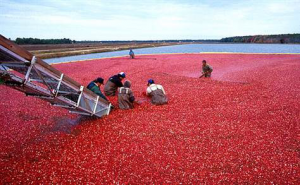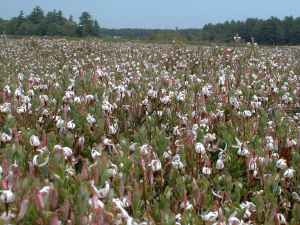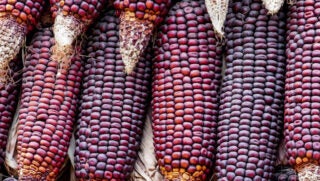Thanksgiving is upon us! And in addition to the famous turkey and pumpkin pie, cranberries are an important staple on the dinner table. But where do they come from, and how did they get there?
Cranberries were one of three fruits native to North America. When European settlers first arrived, they were introduced to these berries that native Americans used for food products and dyes. They were known to have medicinal qualities and health benefits, and they were often mashed in with meat as a survival food. Early Dutch and German settlers began calling them “crane berries” because the flowers on the crop looked like the head of a crane.
Cranberries are a nutritional powerhouse — known to be high in fiber, vitamins, minerals, and nutrients, and can also play a role in urinary tract health. They’re the highest of all fruits in antioxidants, which may help support memory function and heart health as well.
Some folks believe that cranberries are grown in water because of popular harvest photos like this:

But the reality is that the crop grows in sandy soil and the bogs are flooded with water when it’s time to harvest. The cranberries float (and can also bounce!) to the top, which allows farmers to skim and harvest the buoyant berries. After harvest, the bogs are drained and snow and ice take over for the winter. Additional sandy soil will be applied on top so that when the snow melts, the sand will help reduce pest pressure in the fields.

Official cranberry farming began in the 1800s, and early settlers brought honeybees over to help with pollination. Despite being called “berries,” cranberries are technically not berries; they belong to a class of fruits called epigynous or false berries. Their fruit grows from beneath the rest of the flower parts and as the fruit ripens the flower stays attached and ripens as well.
Wisconsin leads the way in production, with three-fifths of the nation’s cranberry supply. The Wisconsin cranberry industry is responsible for over 4,000 jobs, and Americans eat about 340 million cranberries a year. It takes about 4,400 berries to make a gallon of juice and there are about 440 berries in a pound. Other regions known for these farms are Massachusetts, New Jersey, Oregon, Washington, and parts of Canada. Three-fourths of the world’s cranberry supply comes from the U.S.
A whopping 20 percent of all cranberries are eaten during the holiday season, and they’re found in over 1,000 food and beverage products. Only 5 percent are eaten as fresh fruit, while 95 percent are processed into juices, jams, sauces, and other products. This is where the history of cranberries begins, because they used to be mashed. They can be quite bitter on their own. They can be used as a preservative, and legend has it this indigenous crop saved early European settlers from harsh winters; from the dying of fabrics to the food, preservative aspect, and medicinal qualities. Definitely a crop to be thankful for!
These are a few reasons why cranberries are a big part of thanksgiving — a North American food that has always (and probably will always) be a part of the Thanksgiving tradition in the USA.
Michelle Miller, the Farm Babe, is an Iowa-based farmer, public speaker and writer, who lives and works with her boyfriend on their farm which consists of row crops, beef cattle, and sheep. She believes education is key in bridging the gap between farmers and consumers.



